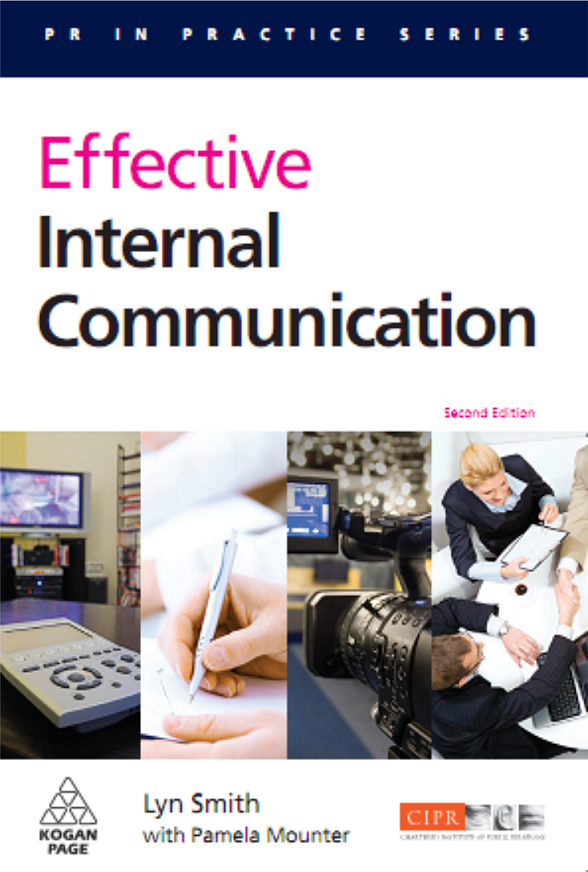
Effective Internal Communication 2nd Edition PR in Practice
Effective Internal Communication 2nd Edition PR in Practice
Contents
About the author ix
About the editor x
Preface by Professor Anne Gregory xi
Acknowledgements xiii
Introduction 1
PART 1 SETTING THE SCENE
1. What is internal communication? 9
The history 10
Technology added 13
Where it sits in the organization 14
2. What does it take to be an internal communicator? 17
Where to now for the internal communicator? 18
How others see it 22
3. Your audience – who are they? 25
Front-line staff 25
Supervisors/line managers 26
Senior management/middle management 27
Board/director 27
iv
Voluntary sector – trustees, volunteers, members 28
At one remove 28
Creatives and specialists 29
Diversity 30
Segmentation – the way ahead 30
4. Theories into practice 32
The four cultures of the organization 33
Process this way or give us a sign 37 Golden Oldie revisited 38
Semiotics – reading the signs 40
Focus on the mass or the individual 41
The individual revisited 42
Shall we dance? The cooperative model 44
Computer-mediated communication and the implications 45
5. Managing internal communication in-house 48
The business case 48
Who does it 49
How internal communication rewarded 54
So, human resources or public relations? 54
Centralized or decentralized 55
6. Outsourcing the internal communications function 58
The business case 58
What consultancies can offer 60
Reasons to be cautious 61
Getting the best from your consultancy 62
7. How the legal framework fits in 65
General communication minefields 66
In the workplace itself 70
8. The channels, vehicles and activities 79
What is the message? 79
Face to face – one to one 80
Face to face – en masse 81
Print 83
Broadcast and audio-visual 84
Internet driven 86
Corporate glue – games, etc 87
Events 88
Environment 89
Corporate social responsibility 89
Contents
v
9. Who uses which media for what 93
The manager’s perspective 93
Top down – but what about the workers? 94
Ensuring someone is listening 96
Unblocking the blockages 96
Media or symbol? 98
The invisible web 99
10. The receiving end 101
Staff perceptions 101
Is there anybody there? 102
Involvement the key 103
Last on the bandwagon? 103
Give them what they need to do the job 104
The in-house language 105
Upwards communication 106
Conclusions to be drawn 106
11. Communicating with special groups 109 Tapping into cultural diversity 110
The differently abled 112
Age, gender and sexual orientation 113
Working from home or out on the road 114
The unpaid heroes 116
Micro-organizations 117
Conclusions 118
12. The globally dispersed workforce 119
The consultancy approach 123
Things to think about – pan-EMEA and beyond 124
PART 2 GETTING IT RIGHT – PRACTICAL APPLICATION
13. How to do it – setting about communication 129
What your people want to hear 131
14. We can all talk can’t we? Face to face 136
Listening in on easy conversation 136
How others do it 138
Overcoming presentation sickness 140
15. Leading from the middle 142
Accentuate the positive 145
Contents
vi
Moving it on 147
So what makes the middle special? 148
16. The creative aspects – writing, editing and designing it
yourself 150
Capturing the spark 151
Sparking ideas together 151
Sexing up the mission statement 153
Think visually 153
Back to the written word 154
Managing the editorial panel 156
It’s the overall look that counts 157
What to put in 158
The annual report 158
17. Publishing the printed word – the logistical aspects 160 Using the professional typesetter and printer 161
Deploying colour and typeface 162
Pagination and other weighty issues 163
18. Broadcast – do it yourself or call in the experts? 167
Celebrities – home grown or real? 168
Working with the professionals 170
19. Managing change 172
Networks 174
Integrated communication 174
20. Communicating in a crisis 182
So what goes wrong? 185
On the day itself 186
21. Signposting the ether 190
E-mail – getting it right 191
E-mail – getting it wrong 192
Texting – both pro and con 194
Winding up the intranet 195
Writing online 197
Getting the content right online 198
Intranet of record 200
22. They go it alone – online 202
Working with social media 206
Contents
vii
How widespread is social media? 207
What can social media add? 209
23. How to measure success 212
Benchmarking 214
Surveys 214
Audits 219
Other ways in 220
Taking the measure of new media 220
Looking back and onwards 221
24. How to make it happen – gone shopping! 223
Starting from scratch 224
Where to look 225
Preparing the brief 226
Interviewing likely contenders 227
So what next? 228
Working with suppliers 229
25. Internal communications – the future 231
Implications for the internal communicator 236
Appendix 1. Internal communications knowledge and skills 239
Appendix 2. Communications in the public sector – a snapshot 250
Appendix 3. Setting up an internal communications function –
things to consider 253
Appendix 4. Useful addresses 257
References 259
Further reading 263
Index 266
 Cart
Cart  Checkout
Checkout